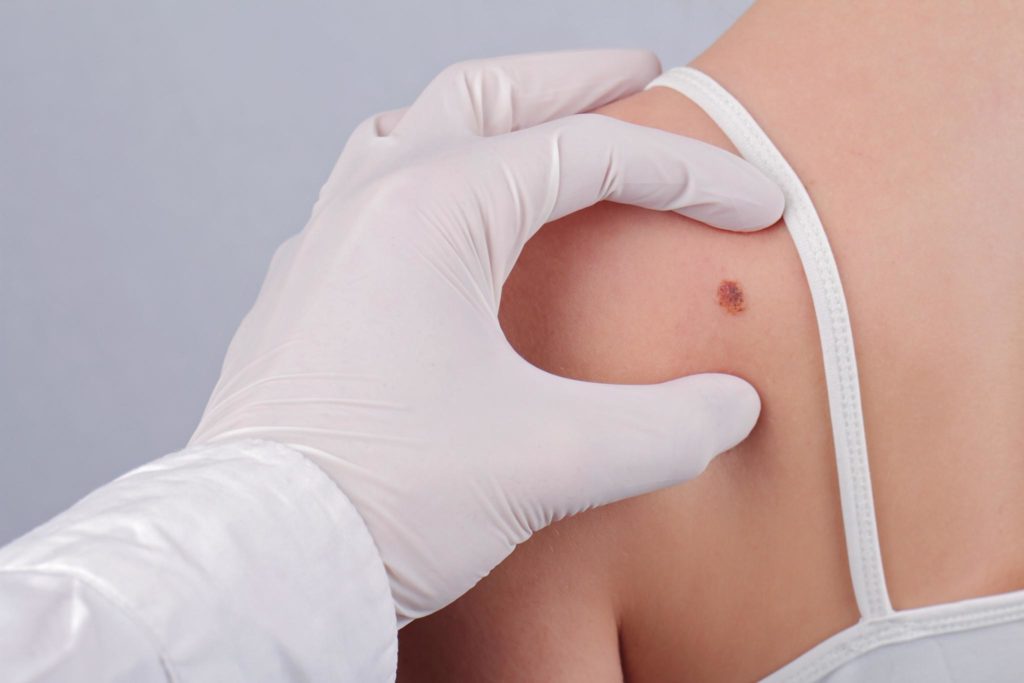While skin cancer is the most common form of cancer in Ireland, there is much you can do to reduce your and your family’s chances of developing it. You can see our introduction to skin cancer and what you need to know here, but the most important thing to remember is that many forms of skin cancer are very treatable and early detection, combined with improved medical care, means the outlook is much more positive than it used to be. Similarly, where surgery is required, advances in plastic surgery mean that the procedures can be carried out with the best visible results.

As Lead Consultant Plastic Surgeon for the Acute Plastics Trauma Service and a skin cancer specialist at the Blackrock Clinic in Dublin, I can't stress enough that being aware of what causes skin cancer, the risk factors, and what you can do to help prevent it are essential.
While we talk about it as a single condition there are in fact a number of types of skin cancer. There are the common and quite treatable non-melanoma basal cell carcinoma and squamous cell carcinoma, and the more serious melanoma.
The most common form of skin cancer in Ireland, BCC develops at the base of the skin’s epidermis or outer layer. It mostly occurs in areas exposed to sun, such as the neck, ears or parts of the face. It can also occur on the chest, back or lower legs and generally doesn’t spread. Basal cell carcinoma can cause a pearly or waxy bump on the skin that can also appear like an ulcer, which is also known as a rodent ulcer.
The squamous cells are at the surface of the skin, which is where this cancer develops. Usually appearing in areas that have had a lot of sun exposure (such as parts of the head and neck, back of the hands and forearms), it looks like a scaly, crusted lump or a firm red lump. SCC is the second most common form of cancer in Ireland and in rare cases can spread to other parts of the body, leading to a poor prognosis.
Most people will know that melanoma is a very serious form of skin cancer. Melanin is the pigment in skin, and this cancer often develops from a dark area such as a mole. It is imperative to get any irregularly shaped moles - or moles that darken or change in shape or colour – checked, as early diagnosis and treatment are essential.
Most skin cancers are caused by exposure to the damaging ultraviolet (UV) rays in sunlight. The most common cause is chronic intermittent exposure to sun, specifically, UV radiation, with the UVB the most dangerous and major cause of skin cancer. Sun exposure cause damage to skin cells, specifically the DNAs in the skin cells, leading to the development of skin cancer. The sun emits three types of rays:
UVA - which goes deeper into the skin and is responsible for skin ageing. It has also been linked to causing skin cancer.
UVB - the shorter rays that cause sunburn and are the main cause of non-melanoma skin cancer.
UVC - is filtered by the ozone layer before it reaches Earth.
The UV rays penetrate the skin and damage the DNA in skin cells. These cells are then unable to work as normal, which results in skin cancer developing. It can take decades for this UV damage to develop into skin cancer. Keeping children protected from the sun, and teaching safe sun behaviour to teens will help reduce their risk in the future.

When it comes to any form of skin cancer, protecting skin from UV rays and being aware of your and your family’s skin are key to minimising the risk and potential damage of skin cancer. Know what is normal for you and your children, and if you spot any unusual bumps or irregular moles, get them checked. You can also have regular mole checks at one of several clinics in Ireland to help identify any pre-cancerous growths before they begin to cause a problem.
If you are concerned about yourself or your family, you should contact your GP to have the lesion assessed as soon as possible. In Ireland, the GPs are very much aware and cognisant about skin cancers (melanoma or non-melanoma skin cancer) and their guidelines and referral pathways.
If you are concerned about your skin or that of a loved one, arrange a consultation with me at my clinic, and download our free guide to sun protection:
Download Mr Chan's Guide to Proper Sunscreen Use
While skin cancer is the most common form of cancer in Ireland, there is much you can do to reduce your and your family’s chances of developing it. You can see our introduction to skin cancer and what you need to know here, but the most important thing to remember is that many forms of skin cancer are very treatable and early detection, combined with improved medical care, means the outlook is much more positive than it used to be. Similarly, where surgery is required, advances in plastic surgery mean that the procedures can be carried out with the best visible results.

As Lead Consultant Plastic Surgeon for the Acute Plastics Trauma Service and a skin cancer specialist at the Blackrock Clinic in Dublin, I can't stress enough that being aware of what causes skin cancer, the risk factors, and what you can do to help prevent it are essential.
While we talk about it as a single condition there are in fact a number of types of skin cancer. There are the common and quite treatable non-melanoma basal cell carcinoma and squamous cell carcinoma, and the more serious melanoma.
The most common form of skin cancer in Ireland, BCC develops at the base of the skin’s epidermis or outer layer. It mostly occurs in areas exposed to sun, such as the neck, ears or parts of the face. It can also occur on the chest, back or lower legs and generally doesn’t spread. Basal cell carcinoma can cause a pearly or waxy bump on the skin that can also appear like an ulcer, which is also known as a rodent ulcer.
The squamous cells are at the surface of the skin, which is where this cancer develops. Usually appearing in areas that have had a lot of sun exposure (such as parts of the head and neck, back of the hands and forearms), it looks like a scaly, crusted lump or a firm red lump. SCC is the second most common form of cancer in Ireland and in rare cases can spread to other parts of the body, leading to a poor prognosis.
Most people will know that melanoma is a very serious form of skin cancer. Melanin is the pigment in skin, and this cancer often develops from a dark area such as a mole. It is imperative to get any irregularly shaped moles - or moles that darken or change in shape or colour – checked, as early diagnosis and treatment are essential.
Most skin cancers are caused by exposure to the damaging ultraviolet (UV) rays in sunlight. The most common cause is chronic intermittent exposure to sun, specifically, UV radiation, with the UVB the most dangerous and major cause of skin cancer. Sun exposure cause damage to skin cells, specifically the DNAs in the skin cells, leading to the development of skin cancer. The sun emits three types of rays:
UVA - which goes deeper into the skin and is responsible for skin ageing. It has also been linked to causing skin cancer.
UVB - the shorter rays that cause sunburn and are the main cause of non-melanoma skin cancer.
UVC - is filtered by the ozone layer before it reaches Earth.
The UV rays penetrate the skin and damage the DNA in skin cells. These cells are then unable to work as normal, which results in skin cancer developing. It can take decades for this UV damage to develop into skin cancer. Keeping children protected from the sun, and teaching safe sun behaviour to teens will help reduce their risk in the future.

When it comes to any form of skin cancer, protecting skin from UV rays and being aware of your and your family’s skin are key to minimising the risk and potential damage of skin cancer. Know what is normal for you and your children, and if you spot any unusual bumps or irregular moles, get them checked. You can also have regular mole checks at one of several clinics in Ireland to help identify any pre-cancerous growths before they begin to cause a problem.
If you are concerned about yourself or your family, you should contact your GP to have the lesion assessed as soon as possible. In Ireland, the GPs are very much aware and cognisant about skin cancers (melanoma or non-melanoma skin cancer) and their guidelines and referral pathways.
If you are concerned about your skin or that of a loved one, arrange a consultation with me at my clinic, and download our free guide to sun protection:
Download Mr Chan's Guide to Proper Sunscreen Use